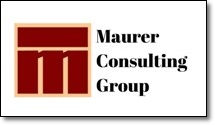
November-December, 2019 Volume 15 — Issue 92
 Sometimes just knowing what you need to have or do to expand and grow your business isn’t enough. Not knowing how to make necessary changes, when and where to begin can become major barriers. It is like running into a very thick, high, wide wall. You are stopped dead in your tracks. You want to get back on your path to success beyond that wall, but can’t see a way. Lacking the ability to get back on track is one major reason small businesses fail to grow.
Sometimes just knowing what you need to have or do to expand and grow your business isn’t enough. Not knowing how to make necessary changes, when and where to begin can become major barriers. It is like running into a very thick, high, wide wall. You are stopped dead in your tracks. You want to get back on your path to success beyond that wall, but can’t see a way. Lacking the ability to get back on track is one major reason small businesses fail to grow.
How quickly can you respond to questions like ‘How?’ ‘What?’ ‘When?’ ‘Who?’ Any of these unknowns is enough to bring small business growth to a screeching halt. “Who benefits most from our products/services?” “How do we identify ideal customers?” “What marketing can reach only ideal customers?” “When is the best time to reach our followers on Social Media?”
Regarding useful information on growth and success for small businesses, let’s take a different approach. Instead of more information on what you need or should be doing, let’s take the perspective of common reasons many small businesses fail. What is NOT working. This approach helps clarify your thinking about yourself as a small business owner. It starts with reviewing the approach your firm has taken thus far. From this perspective, you can better see what has gone very right or gone terribly wrong. If you can see why your own small business has failed to grow, it becomes easier to make changes in strategy for positive effects moving forward.
Why Small Businesses Fail to Grow
There are a number of reasons small businesses fail. It’s never as simple as ‘There is only one reason a small business fails… and this is it. Fix this and you’re home free from here on.’ Start by asking yourself a few quick and easy questions:
- How long have I been operating my small business?
- Assuming you started out on your own, where are you now – still trying to make it alone, or with some key staff members to help?
- Is my business as successful? In what ways is it successful? Jot down your reasons: I like what I am doing, I have enough pleasant customers, I am making a good profit and nice income. Or, I enjoy planning and strategy as ways to expand and grow my business.
- Am I doing what I am passionate about? Or, I feel like every day is an unpleasant, uphill battle?
Under a broad assumption, your personal responses to the questions above are not all positive. Good news is: we can also assume things need to change to achieve growth and success. Next step: figure out what’s going wrong and needs change to make your firm more successful. Among reasons a small business fails, a blog post by Synnovatia, offers these reasons for failure.
No growth goal
How will you get to a place or situation if you don’t know where it is or what it will look like? If you don’t know where you are going, you’ll never realize when you get there – or IF you get there. You need a plan to grow with a timeline and path to guide your progress.
No company strategies
Take a one-day-at-a-time approach, hope something good will happen to your small business. That is definitely NOT a growth strategy. A lot of things can happen to your business on any given day, and those things aren’t necessarily positive.
Growing – and doing everything else – alone
While ‘alone’ may feel safe, it is not an environment that will encourage or sustain growth. When you launched your small business, I would bet that you thought you would work less hours, whenever you wanted and make more money. More often than not, none of those happen, especially for those who are doing everything alone.
Penny-Pinching
Anyone who has started a small business is aware of the bootstrapping concept. We begin by keeping spending tightly under control until revenue starts flowing and profits are realized. Sadly, too many never understand the need to trade in ‘on-the-cheap’ for ‘investing’. The cheap approach may have gotten you to where you are now, but have you been in that same place far too long? You will likely be there forever, not growing, without investing in yourself and your company.
6 More Reasons Small Businesses Fail to Grow
Jay Goltz, a speaker and author about business, actually owns several design/decoration industry related businesses. He also wrote a business blog published by the New York Times entitled ‘You’re the Boss’. Jay went even deeper into reasons small businesses fail to grow and succeed. Some of the reasons for why small businesses fail to grow that he cited were:
Complacency of owner, founder, and leadership
If you take a stance of not caring about much in regard to your business that is exactly what will you will get… not much. Instead of growing and increasing profits, nothing much is likely to change. Struggling with minimal cash flow will continue. Is not having enough customers, sales or projects is a problem for your small business? Chances are pretty good that everything will remain the same until you decide to make changes and improve your situation. Did you start a ‘business’ to provide quality products and services to customers, job opportunities for others and generate a profit? Or, was all of that time and effort expended just to generate a paycheck – and a pretty small one at that?
Not hiring the ‘right’ people.
 ‘Right’ people do the right things. They help build company success. ‘Right’ employees understand the company’s plans, goals and strategies as well as the roles they play in achieving them. Good employees don’t spend their days at work chatting with co-workers, playing on their cell phones or watching the clock.
‘Right’ people do the right things. They help build company success. ‘Right’ employees understand the company’s plans, goals and strategies as well as the roles they play in achieving them. Good employees don’t spend their days at work chatting with co-workers, playing on their cell phones or watching the clock.
Small business owners who don’t take time to create hiring standards and policies end up with too many ‘wrong’ people on their team, dragging their feet and company progress. Understand what you need from each new addition to your firm. Hiring staff is one of the most important parts of moving your small business to the next level. You have taken the firm as far as it can go on your own. To grow larger, serve more customers or offer more products and services, you are going to need help – high quality help.
Lack of Standards and Controls
As a company begins to thrive and grow, it is time to create standards and controls under which the company, its leaders and all employees must operate. Flying by the seat of your pants with everyone doing things the way they want won’t hack it anymore. Standardized systems, processes and policies need to take over if you want to move into strong, sustainable growth.
Technology
Technology can level the playing field between long time businesses and start-ups. Small firms can appear larger and more competent. Tech innovations automate tasks that allow small businesses to run smoothly and operate with only necessary staffing. Can it be costly? Sometimes it can be, but very often it is not. Can it save you money in the long run? If you choose the correct options, in most cases, yes, it can save.
Investigate new software and hardware options that can handle mundane tasks. Applications and website plugins, even those with a price attached can be extremely helpful. Some offer free trials and pricing levels to help businesses start small. Then, their tech solutions grow with you by adding more advanced features at a reasonable cost. Investigate options and invest in the best for your company.
Lack of Leadership
Everyone that begins a business of their own may not be a strong leader. We begin at the bottom, floundering a bit but doing our own thing. Then, by some miracle, the firm begins to grow. It expands beyond an individual’s ability to cope and handle everything that goes with owning a business. To continue, bringing on staff to help becomes a necessity. Employees don’t operate in a vacuum. To be useful and do a good job, they need someone to lead and manage them. Are you now, or can you become, that person? Something to think about, isn’t it?
Wrap up
So, what are you going to do moving forward into 2020? Keep doing more of the same, or make change to help your small business grow and be more profitable? Start with a change in your mindset. Avoid  using a road filled with potholes, hurdles, twists and turns. Instead, opt for a clear, unfettered path between where you are now and where you want to go.
using a road filled with potholes, hurdles, twists and turns. Instead, opt for a clear, unfettered path between where you are now and where you want to go.
Choose Growth and Success instead of Endless Struggles you’ve been facing time and time again. You didn’t start your business to fail. You dreamed of setting up a successful small business. Think about it: how much better are you doing today with your business than you were when you began? Time to build that strong foundation you should have had when you hung out your shingle. Processes and concepts that would have provided support from the start.
What’s Next?
Our ‘Designing Strategies’ newsletter and blog were launched with goals of providing useful tools to help small business owners and leaders grow and succeed. Articles covering best business practices, aimed to help create a stable foundation structure for small businesses like yours were created and published.
‘Designing Strategies’ posts share nuggets on the importance of setting strategies and planning to improve chances of success for any small business. Further articles cover the need for a growth strategy instead of just waiting for some big, hot, new project to drop in our laps. It’s time to knuckle down and formulate plans and strategies to create a path to growth and profitability.
Perhaps your interest in changing the future of your small business has been piqued. You are tired of stagnating in a rut you’ve been in for a long time. You want to start growing and moving your company to a higher – or different – level, but you need help. Just give me a call – or send an email. Let’s discuss your current situation and how we can help show you the way to position your firm for growth.
Visualize – Analyze – Strategize
Your Small Business to a Successful Future






